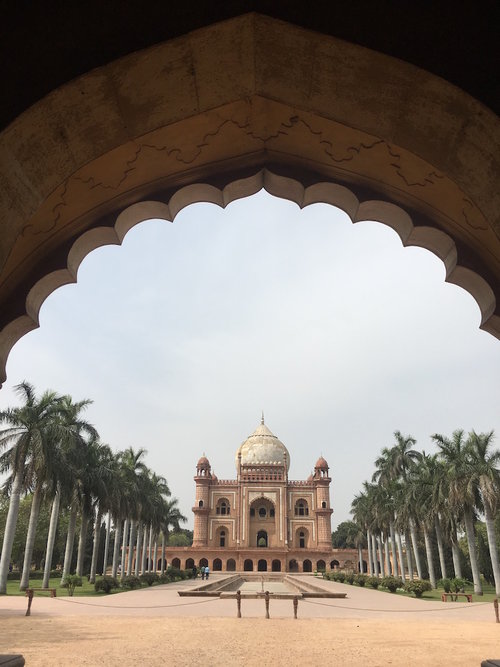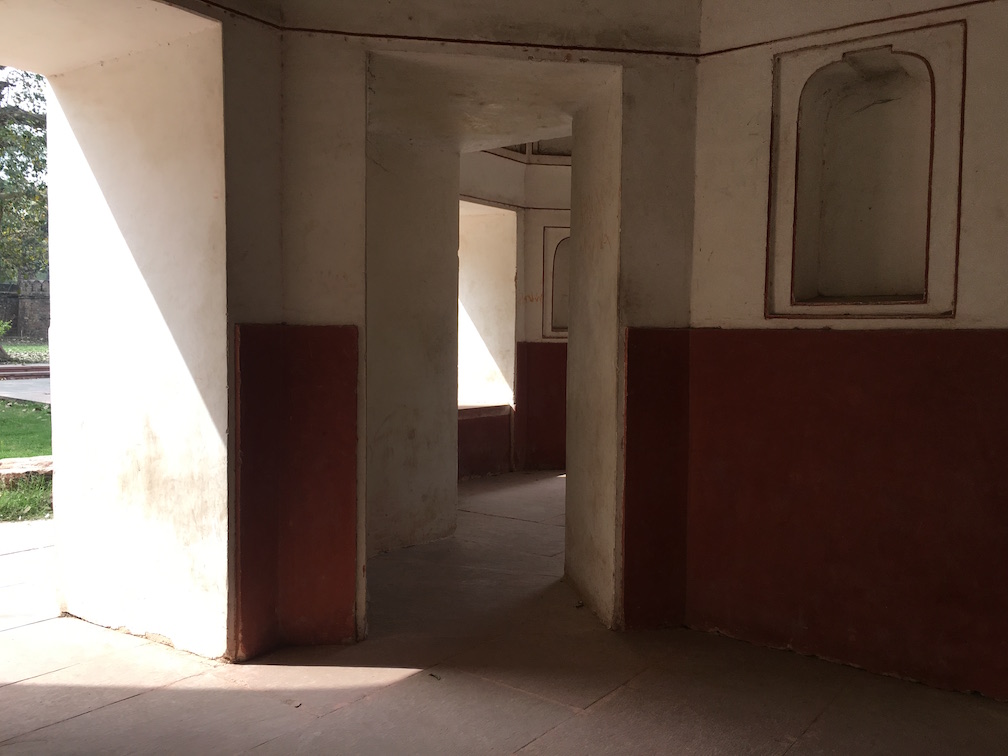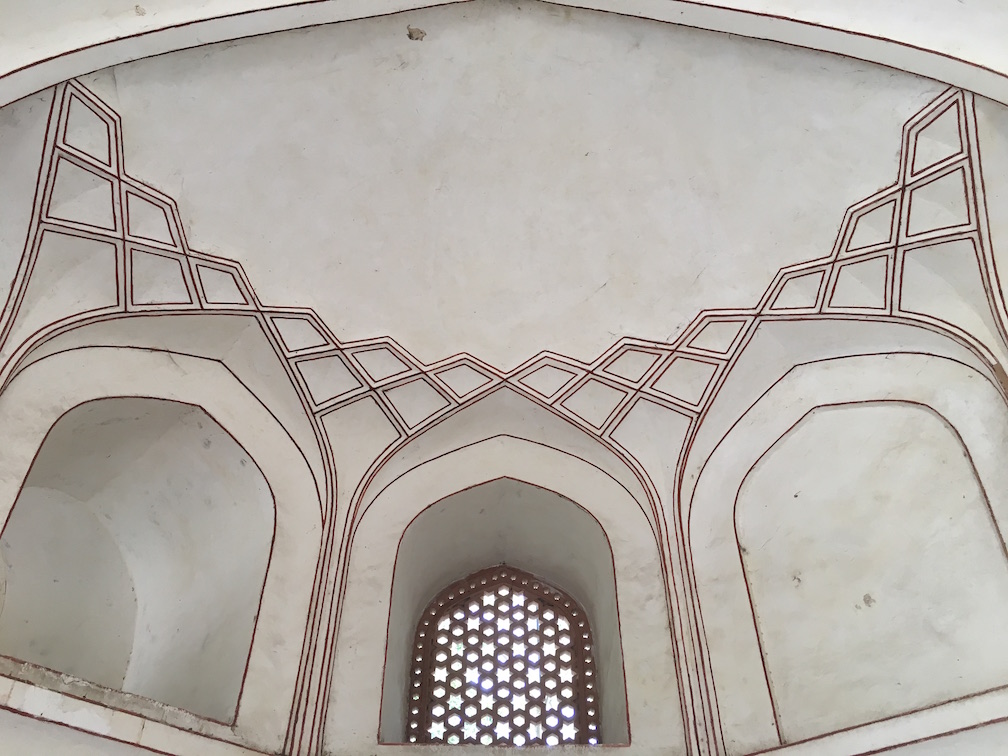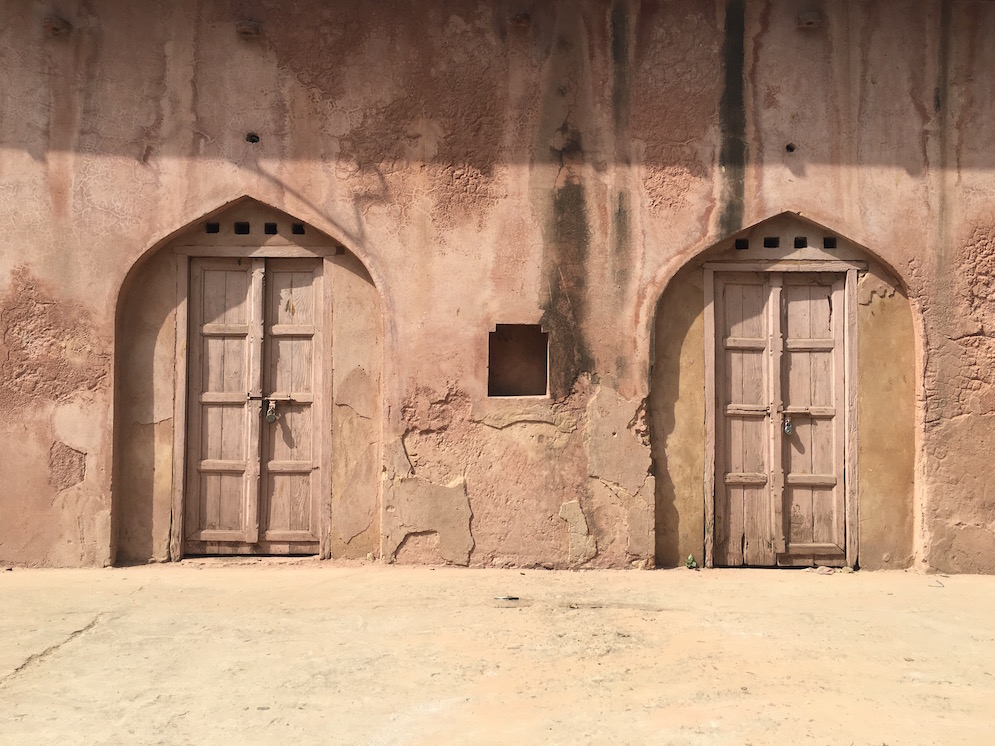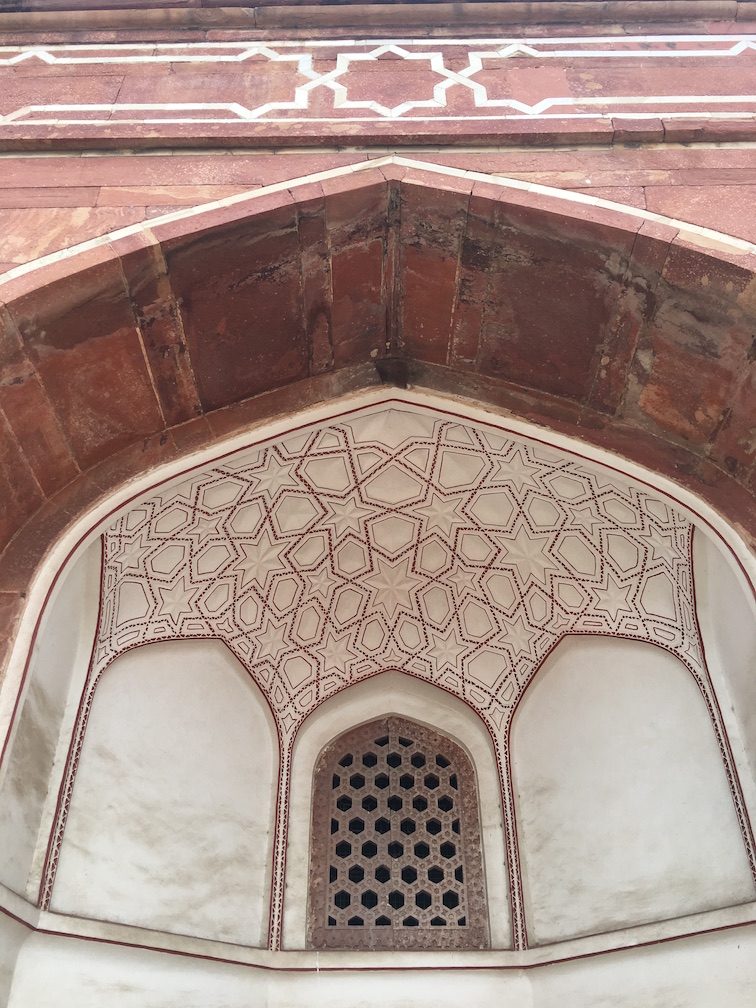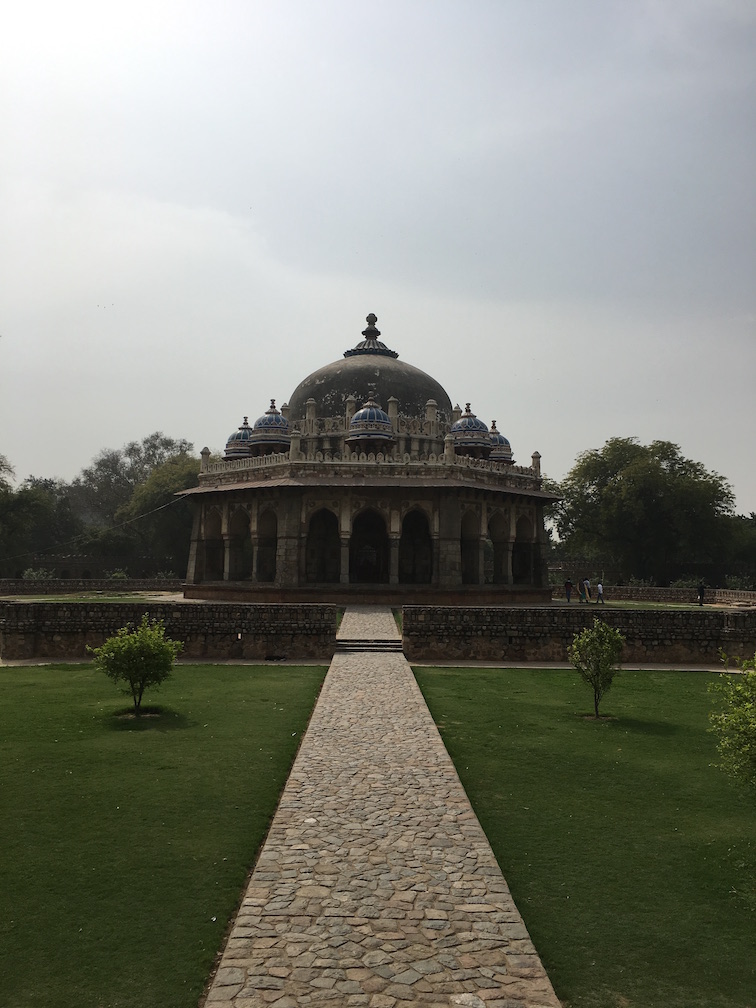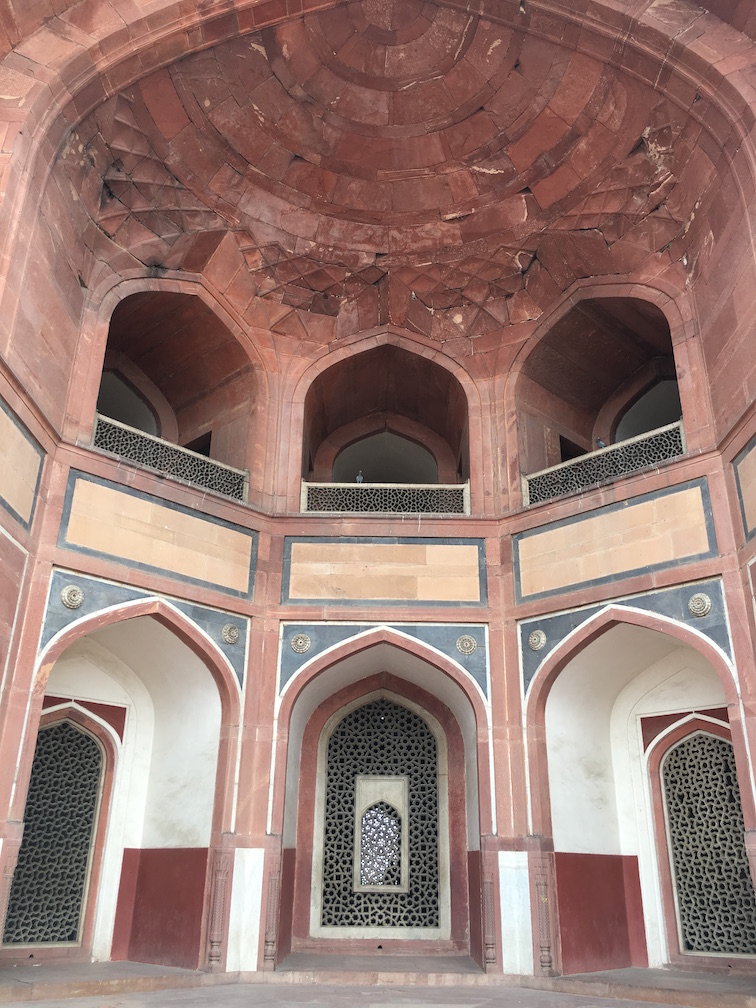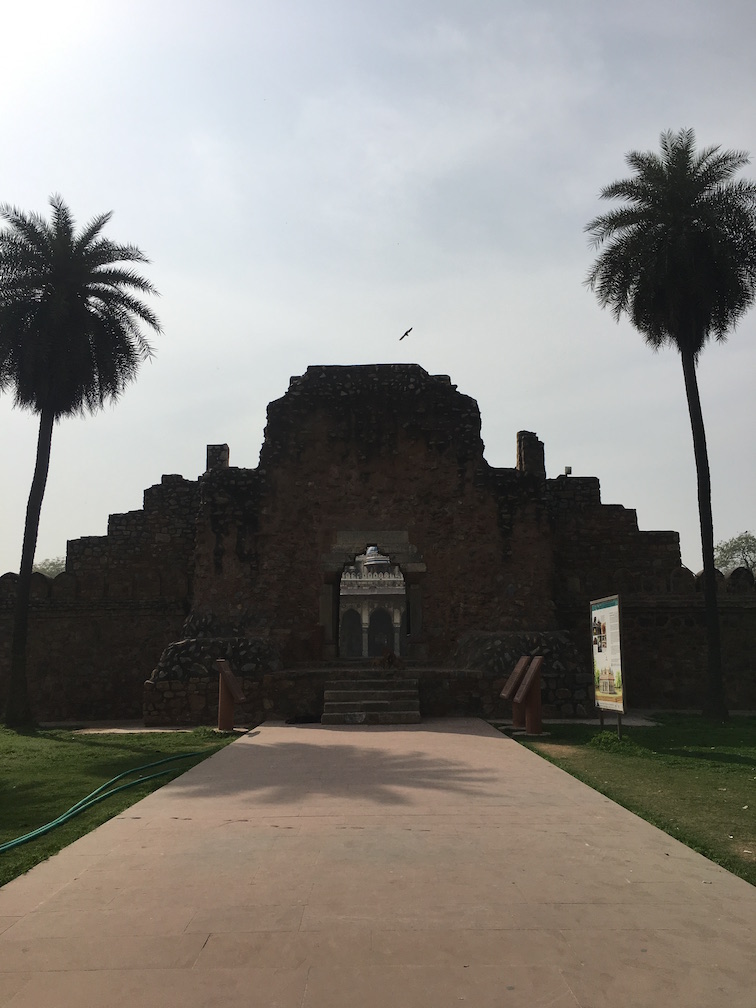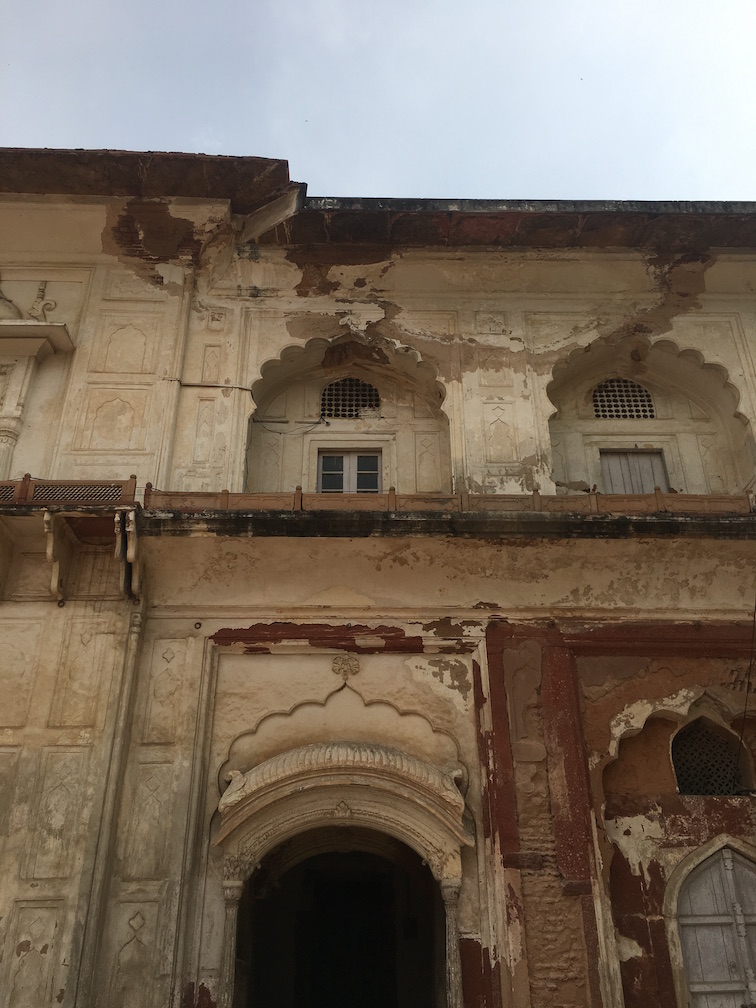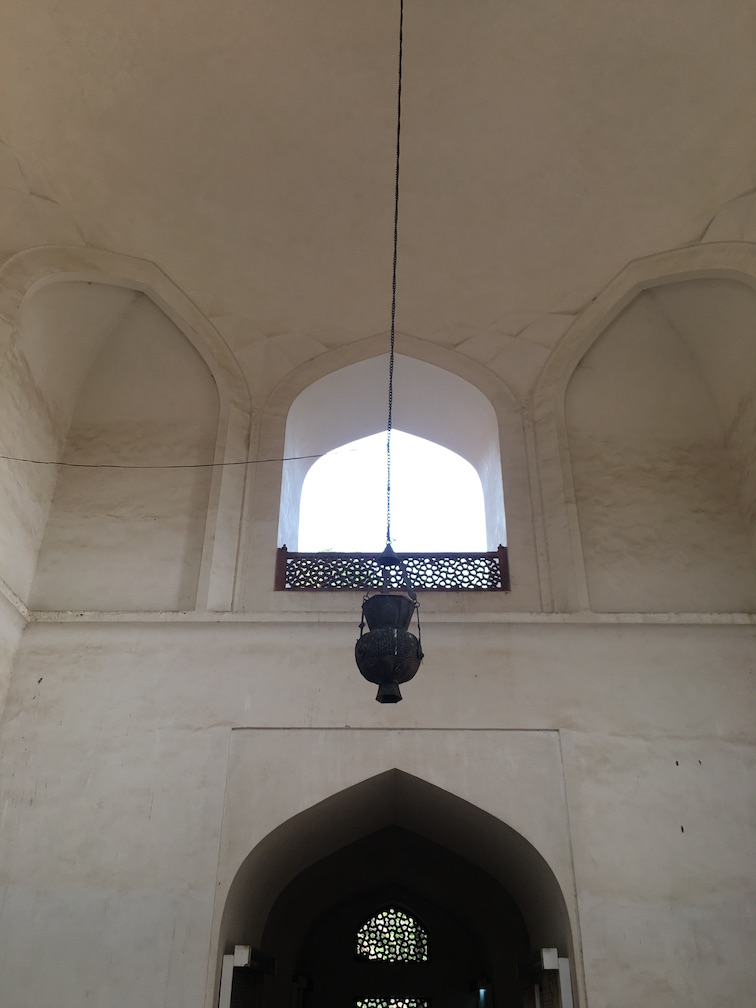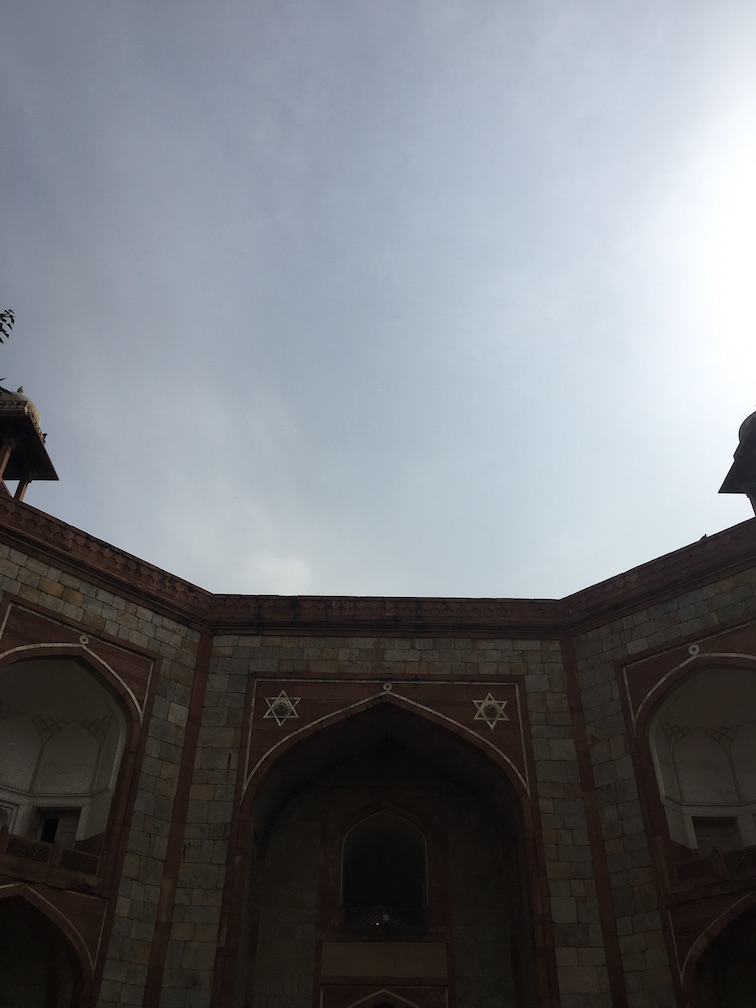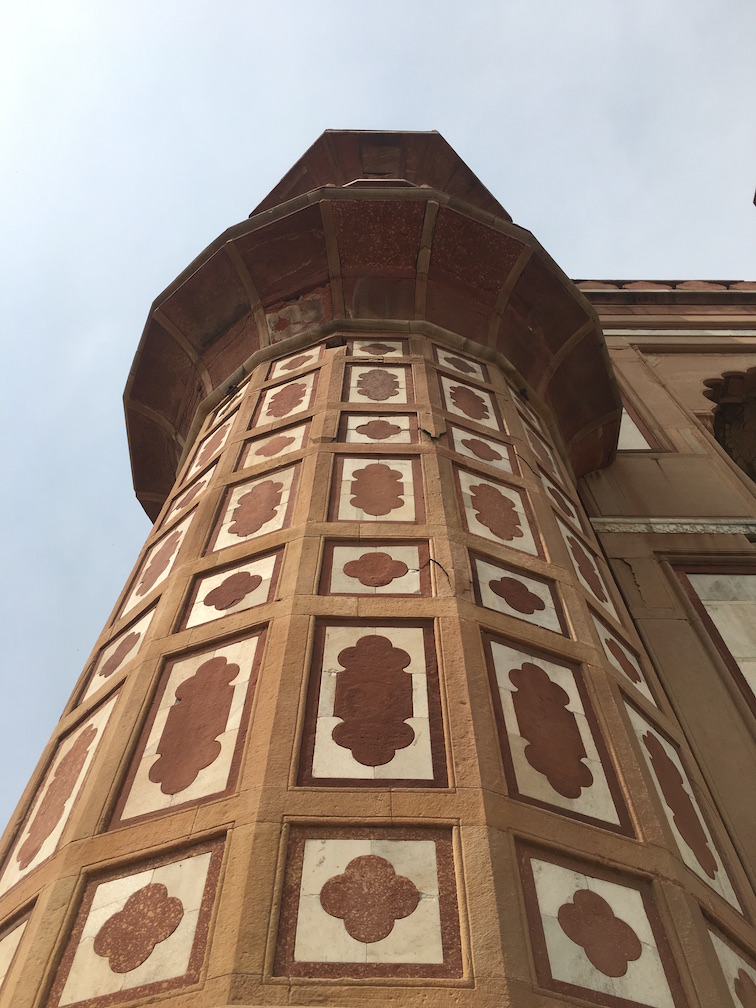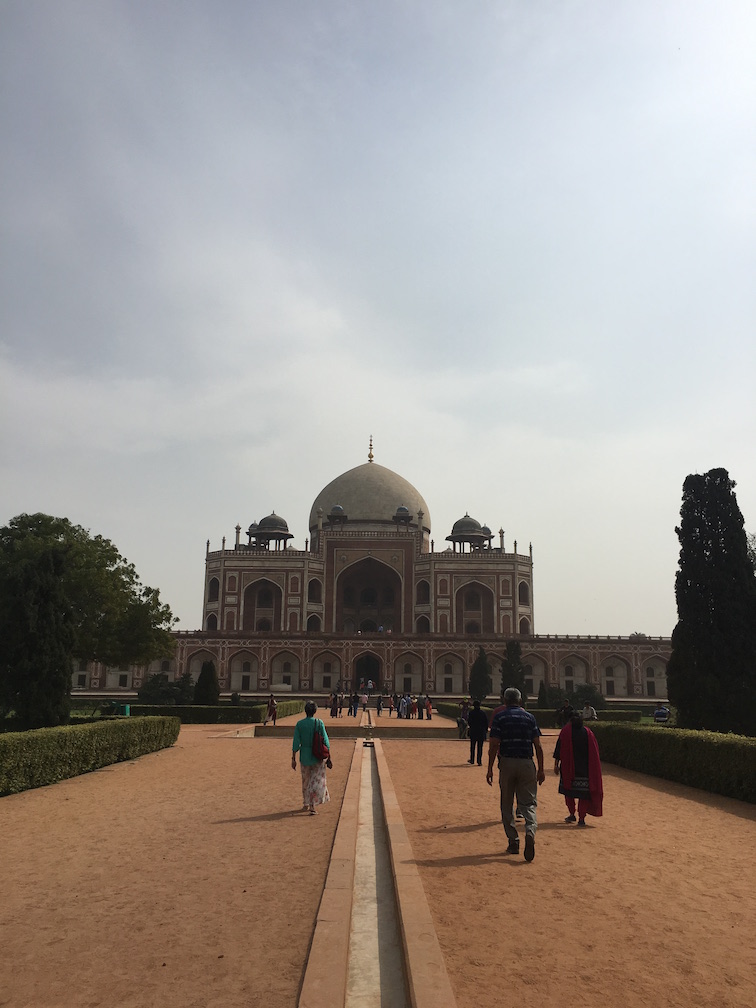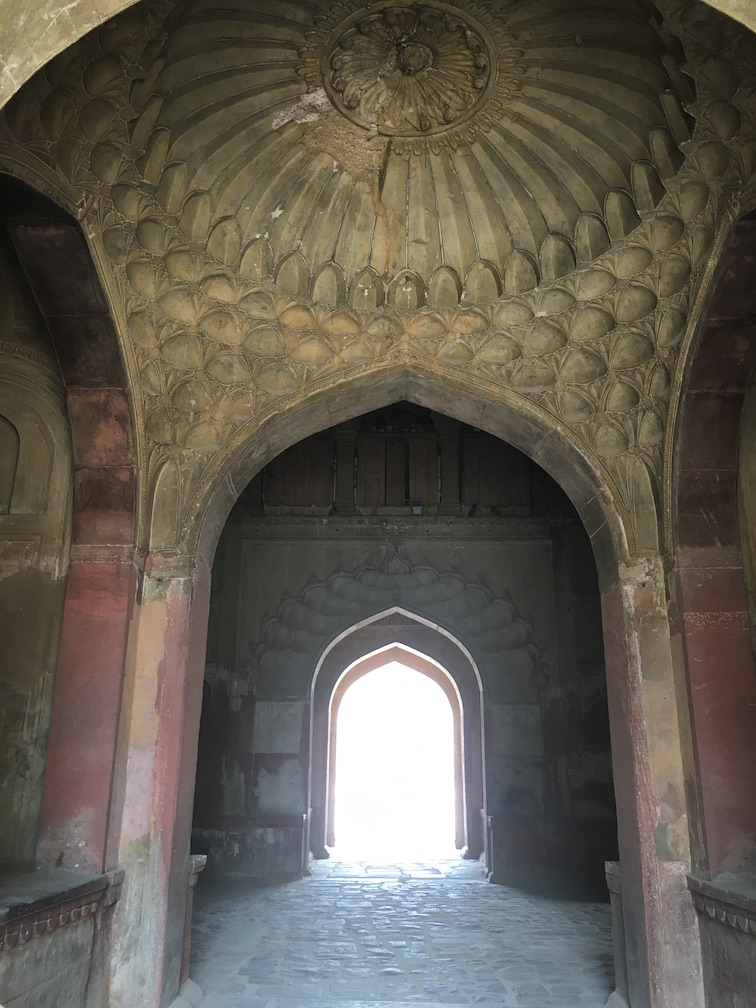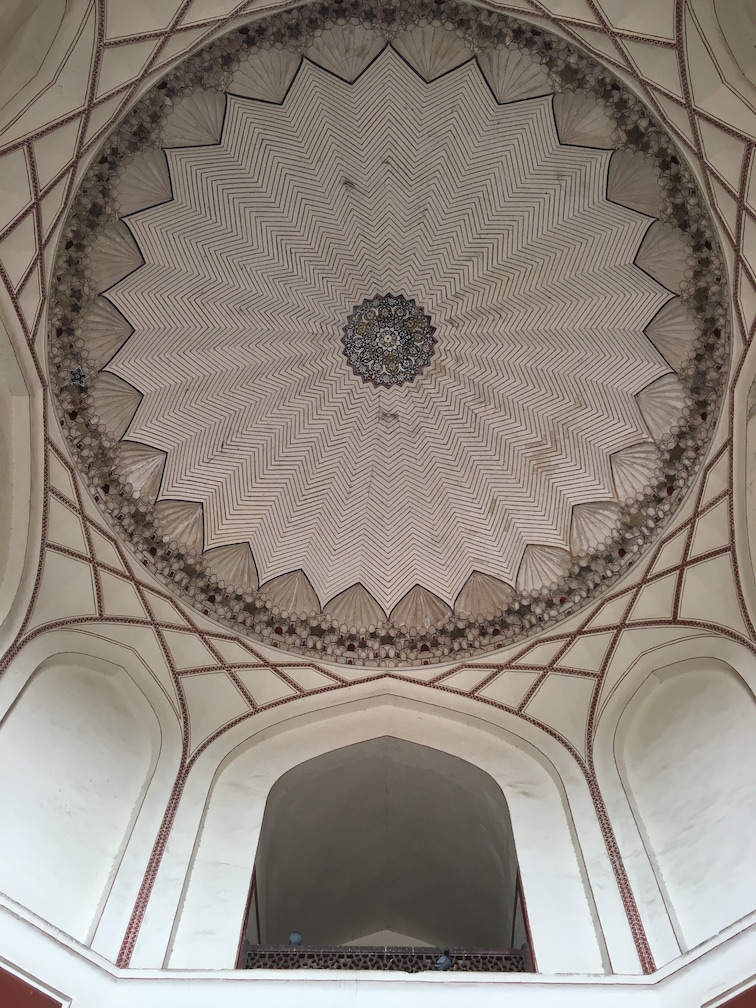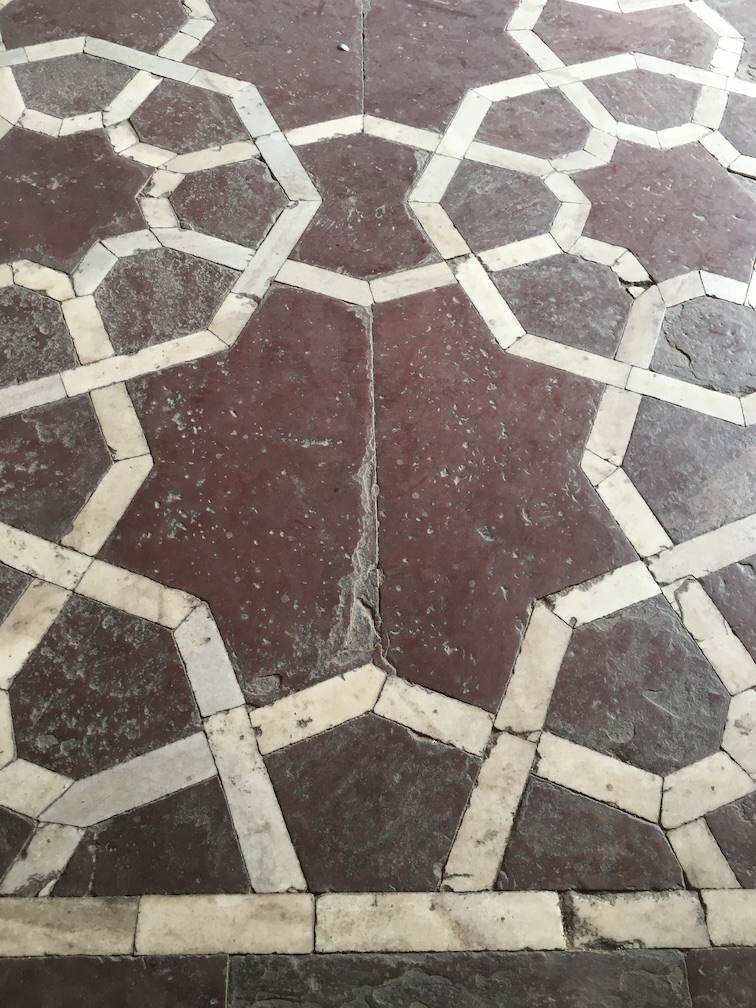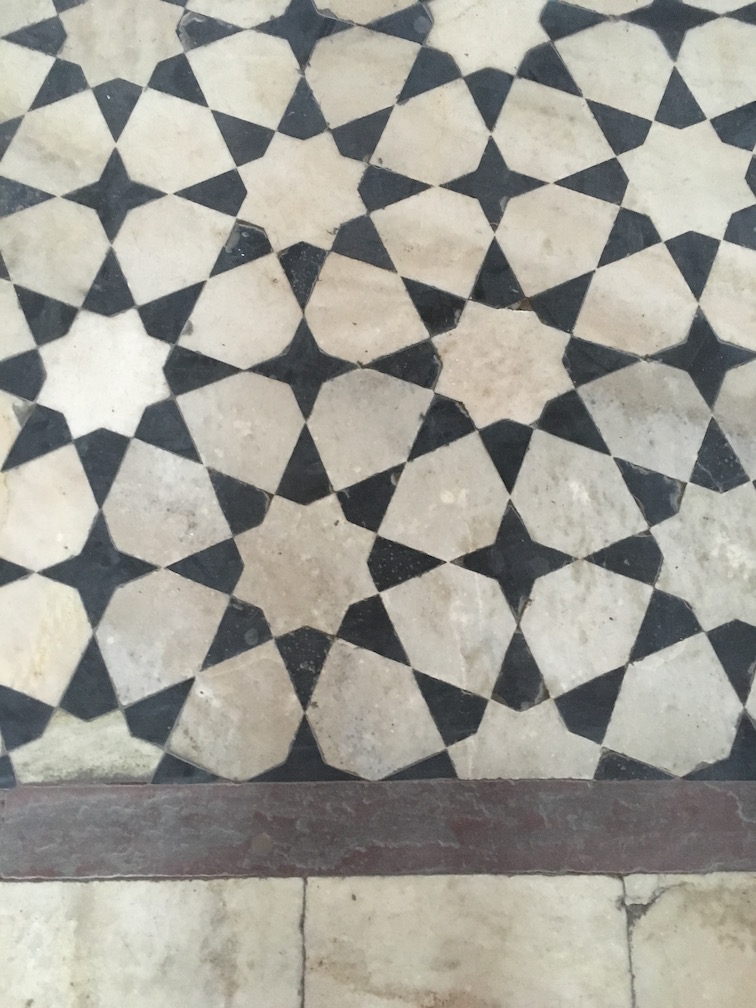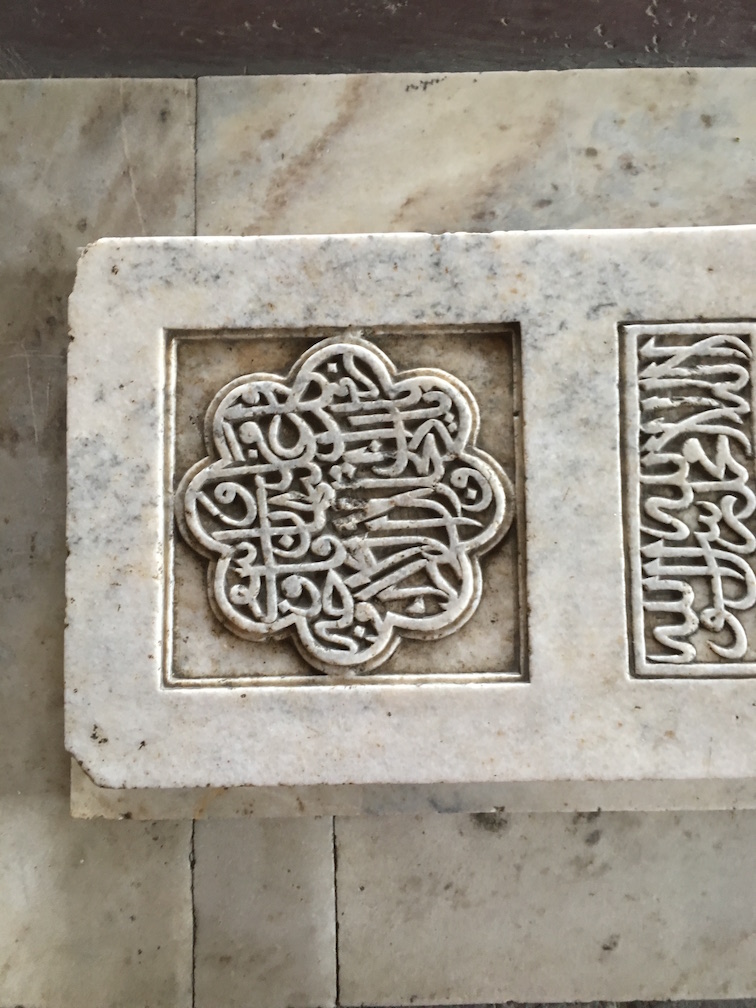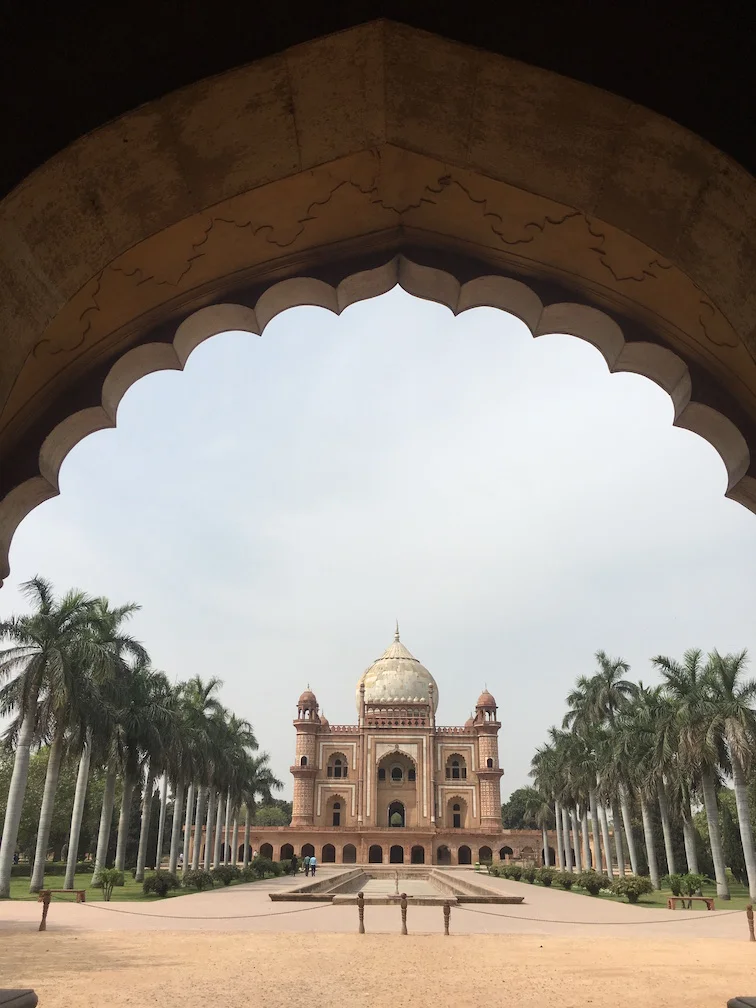Tomb Hopping
Why are we tomb obsessed? A visit to some of the major tombs in Delhi plays like a highlight reel of historical conquests, structural odes to men that populate history books, and some poetic reminiscence about times that I can now say I have visited (and lived to tell the tale).The chahar-bagh (four square gardens) model and water channels are running themes through these distinct tomb complexes. This concept symbolises the four gardens of paradise cited in the Qur’an. Mughal architecture is usually characterised by perfect symmetry, spatial exuberance, bulbous domes, intricate geometric patterns and a generous sprinkling of diligent palm trees. Usually, white marble coupled with red and grey sandstone adorns the domes, minarets, archways, narrow staircases, and curved ornamental ceilings that shelter delicately engraved marble tombs.
Within Lodhi Gardens, there exist two tombs and two ‘Gumbads’ (domes), as well as attached mosques. Today, you will find brisk walkers on the pathways facing the tombs, and impassioned couples lounging in the adjoining gardens. The square and octagonal structures are attributed to the Lodi dynasty which ruled in parts of northern India between 1451 to 1526. The gardens are an urban sanctuary, but also a customary nod to shared legacy, however poorly preserved. A brief distance from here lies a more opulent monument—Safdarjung’s tomb.Walking through the painted archways of the Safdarjung tomb feels like a gradual shedding of the time to which one belongs. The mammoth tomb resting on its arched platform seems to be contemplating its visitors—not approving, not disapproving, simply observing—as they carve their myriad names on its walls, drag their feet across its weathered stone, try and fail to document its sheer scale and brilliance. The last (or latest, depending on perspective) masterstroke of Mughal era architecture in Delhi, it preserves a beauty at once explicit and elusive.
Humayun’s tomb, on the other hand, was the first of the Mughal dynastic mausoleums, which in turn inspired the design of the Taj Mahal almost a century later. Strangely enough, the tomb was actually commissioned 14 years after Humayun’s death (He fell off a flight of stairs in his library. It’s all very dramatic.), and the entire complex houses around 150 graves. Some of these could have been family members, others decorated members of state, and yet others might have been royal barbers (The Nai-Ka-Gumbad is a fascinating feature of the complex).The neighbouring Isa Khan tomb shares the Persian influence on architecture, embellished by blue tiles accentuating the smaller domes towards the top. The extended area of the heritage site includes the Sunder Nursery, which serves a fragment of peace in the midst of the bustling city. Until 2005, the area around tomb was scattered with encroachments and overgrown forest cover—slum dwellers surrounding the now restored regions. The neglect faced by the then dilapidated structures was astounding, which is when the Agha Khan Trust for Culture undertook intensive repair work until Humayun’s tomb complex was reopened in 2013.
Why is the restoration and preservation of historical landmarks essential to Delhi’s urban milieu? Precisely because of the time capsule illusion these sites generate. There is a romance associated with what rests beneath these glorious domes. I’m not referencing the demonstrative nature of love, of the kind that stings subtly as an echo traversing time in tombs like the Taj Mahal or more recent white chalk scribbles in the Delhi tombs (the walls within are vandalised by lovers seeking to immortalise their juvenile escapades). The abiding relevance of these monuments today is rooted in hipster romanticism. It is a genuine and warm acknowledgment of the fact that in a world populated by fleeting things, people, moments; something timeless still stands.Ultimately, I suspect these tombs are dedicated not to people, but to eras. They are the bold transgressions of forgotten times. They might as well proclaim, “Here lies beauty.” Beauty forged by those who wished to strike a dent in history. These dents are what make Delhi habitable now, at least for me. They give the city a uniquely lived-in character. These masterpieces are our inheritance. Why do they feel like blankets?
Words: Akshay Sharma, Photos: Sayali Goyal
Let us curate a cultural day
in Delhi for you
We curate bespoke experiences in Delhi themed around art, crafts, design, architecture and food

